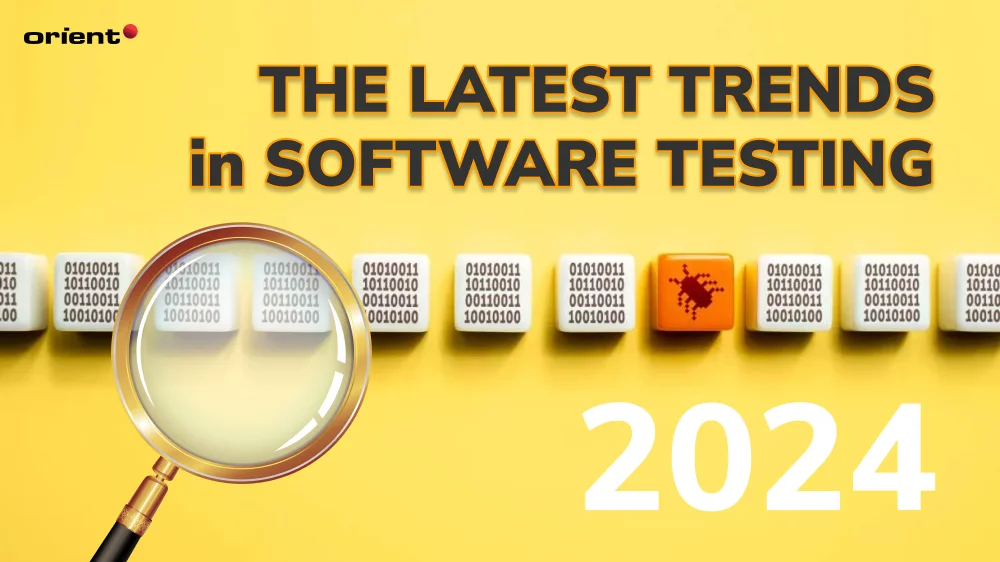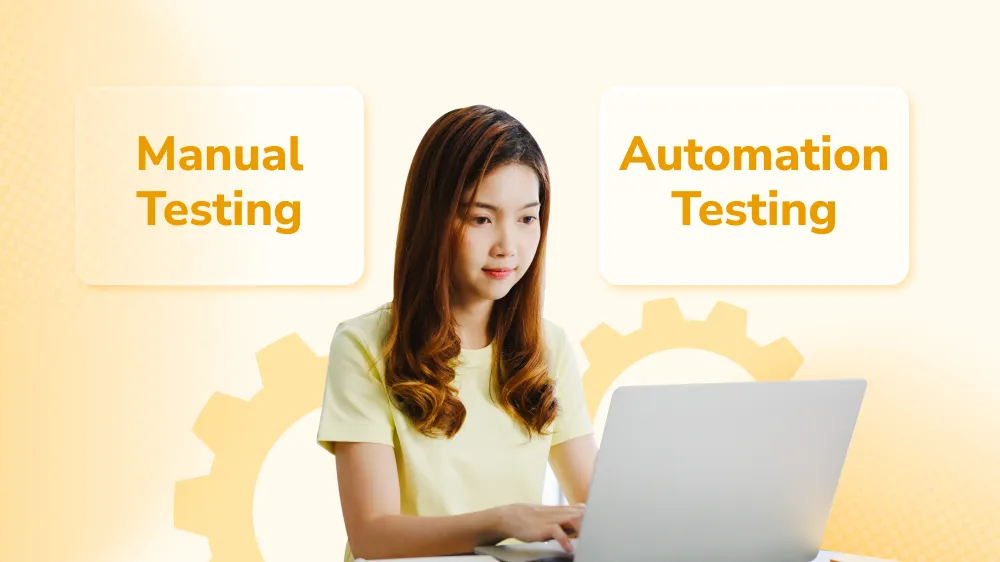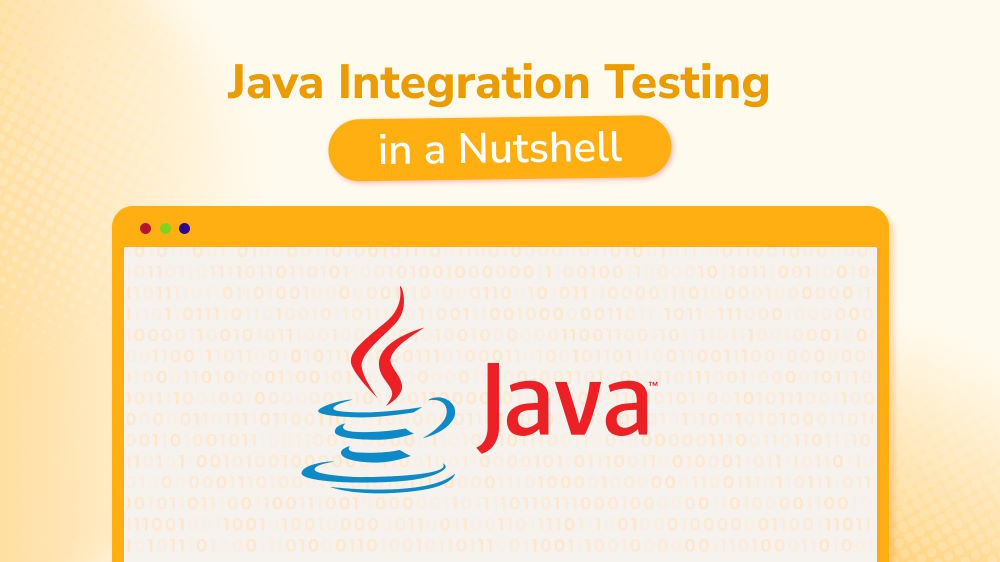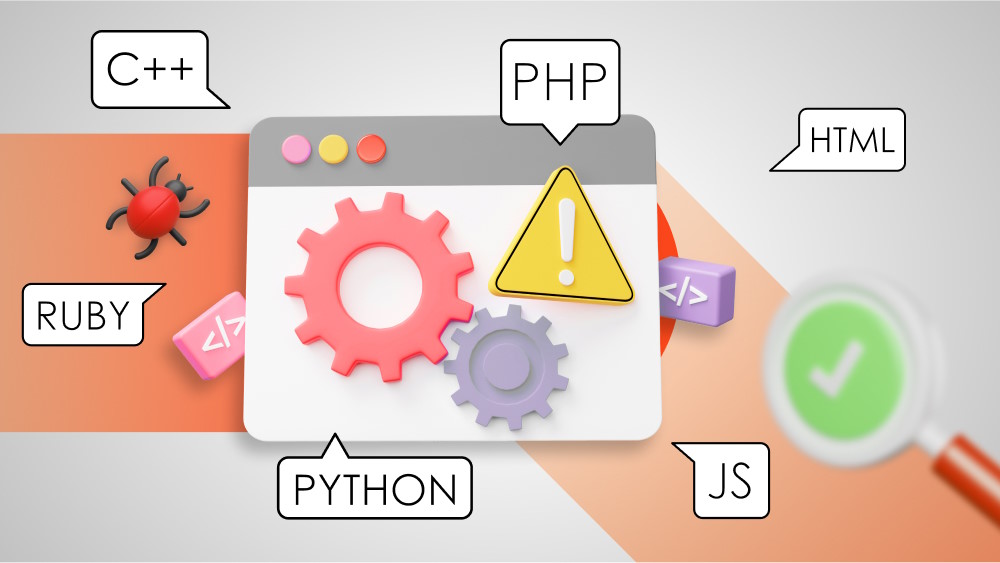
Non-Functional Testing: A Complete Handbook for Developers
Non-functional tests assess usability, performance, scalability, and security - all of which determine the success of an application.
It’s not just the retail industry that has the concept of smart consumers. Users across other fields, including the technology sector, are also individuals who know how to get the best value for their money.
Customers can gain initial attraction to a product through its innovative business idea or unique value proposition. However, the factor that plays an important role in retaining them over the long term is ultimately product quality.
So, how do we ensure the product quality? Yes, through software testing.
Gone are the days when software testing was only performed at the end of the software development life cycle. This method is, of course, still usable but has become gradually outdated because of many limitations. Detecting bugs or issues late leads to a high possibility of reworking, which is very costly and time-consuming.
Thanks to technological advancement, the development team today has more than one technique to conduct testing processes. Software testing industry with the influence of evolving market needs and transforming technologies has introduced various new trends in testing capabilities.
Apply them or be backward! For guaranteed software quality and competitive advantages, let’s take a quick tour of these 15 latest trends in software testing in 2024.
Built on visual modeling and Artificial Intelligence technology, codeless automated testing allows QA engineers to test case scenarios without knowing how to code. Software testing technologies are on the rise, especially codeless automated testing. It accelerates the testing process by reducing the time that is spent on recurring test cases.
Some of the advantages of codeless automated testing are:
Artificial Intelligence (AI) usage continues to grow in every facet of technology due to the number of apps that are making their way to the market. Machine Learning (ML) and AI technologies allow companies to improve their automated test strategies.
It is expected that more AI apps will be heading to the testing zone so that companies can keep pace with recurrent releases. Both ML and AI testing will be able to do this with the help of analytics and reports. However, ML technology is one of the latest trends in testing, a fairly new concept that is expected to grow over the years.
Things you can expect when both AI and ML technologies combine are:
This technique was born to be used in projects applying Agile methodology. With the ability to quickly adapt to changes throughout the software development lifecycle, Agile teams surely can achieve more superior quality and instant feedback through automated testing. By leveraging test automation using various test automation tools, Agile support teams are better able to perform recurring jobs, identify bugs, and test coverage, further resulting in quicker feedback loops and continuous improvement.
This method provides high test coverage in every sprint when working in Agile to help businesses save a great amount of time, manpower, and cost. This trend is gaining popularity and will be beneficial to companies to help their team optimize the testing process.
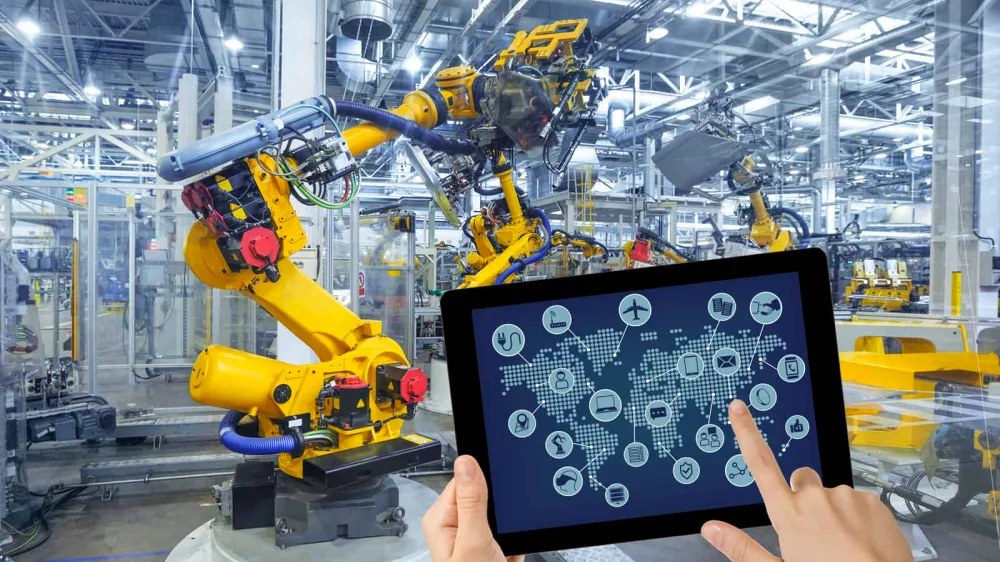
The Internet of Things is a fast-growing concept and will soon accept the 5G standard. By extracting large volumes of data generated every minute through IoT sensors and using them to serve testing processes, the testing industry has released several new gadgets and testing methods in the marketplace and collectively refers to them as “IoT and big data testing.”
The combinations for testing are numerous and allow for testing between devices, protocols, platforms, and operating systems. IoT testing focuses on evaluating the performance of IoT devices under various load conditions and is crucial for enhancing system reliability by preventing unexpected bugs or issues.
As the number of IoT devices increases over time, creating an increasingly open information network, IoT testing is expected to become increasingly popular, especially for businesses that use IoT technology as their main strategy.
The advantages of IoT and big data testing are as follows:
The performance of an app can determine the success of a business, which is why performance engineering is needed. Any issues after the app is introduced into the market can cause millions of dollars in loss.
Most companies are now reconsidering their priorities and are taking a more consumer-focused approach on every stage of the SDLC. The reason for this is to solve and prevent any performance issues at the very beginning of the developmental procedure. This trend is the reason we have been seeing more frequent releases and shorter software development cycle of apps.
The combination of DevOps and Agile is most preferred for several organizations because they are designed to favor swift deployment and strong teamwork between developers and QA engineers. While Agile is the go-to for development and testing, DevOps is known for the association of cross-departments. Together, they facilitate top-quality products at an impressive rate.
This trend reflects a holistic approach to testing that aligns with modern software delivery practices while maintaining high standards of customer satisfaction and product reliability.
Key benefits to this trend are:
Blockchain-powered services are the best fit for progressively leading enterprises worldwide. Providers in the automotive and financial field may need to store a ton of data securely and need to use blockchain technology.
However, this may come at a price as blockchain testing comes with the highest adoption costs, privacy, and compliance issues just to name a few. It is a complicated procedure that includes, encryption, decryption, validation, and transmission of heaps of data.

With higher cybersecurity threats present, businesses are putting security testing at the top of their list to ensure the safety of their data. It is of utmost importance to perform security testing on a company’s system, network, applications, and software to guarantee that the data is safe and has no holes, code errors, or leaks.
As one of the latest trends in testing, security testing reduces the damage associated with cybercrime. Companies large and small are all targets so it is better to be safe than sorry. Security testing can secure data as well as money and will continue to be a priority as long as cybercrime continues to grow.
Benefits of security testing include:
The biggest challenge with traditional testing methods is the inability to predict unexpected events and accurately mirror real-life situations. This is why digital twin models are expected to become more popular in the near future, as they can bridge the gap between simulation and reality.
How? Digital twin models allow the development team to create digital replicas of software applications and conduct testing right in those virtual spaces without impacting the actual production system. Because these controlled testing environments mimic the characteristics of the app’s real-world counterparts, testers using digital twin models easily assess how the software functions under specific conditions, thereby gathering valuable insights and improving predictive capabilities.
Quality assurance engineers and software testers are involved in each stage of the SDLC instead of being restricted to software testing. QAOps seeks to bring operations, testers, and developers together to guarantee the best end product.
DevOps as mentioned before cuts down the SDLC time and allows teams to fix bugs, build features, and push regular updates. QAOps strengthen the communication between developers and testing engineers by including software tests in the Continuous Integration and Continuous Delivery pipeline.
QAOps is not only for large tech businesses as this practice can be scaled high or down to fit companies of any size and can be defined in 2 main principles:
To fast-track the software testing cycle, test automation is the one method to save time and effort. However, to get faster results and maximize profits, DevOps testing groups will look to auto-scale CI/CD runners to match the speed of Agile.
The parallel test provides the opportunity to run a test script over multiple test environments at the same time or test multiple test scripts simultaneously. Auto-scaling runners will seek to handle trouble with several servers to handle queues in a professional manner in the event of parallel testing.
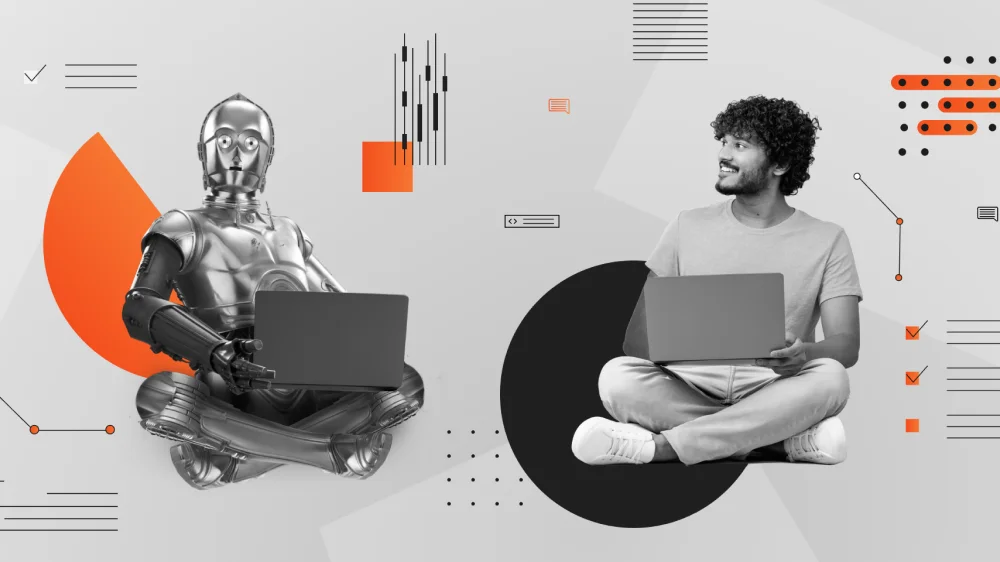
Robotic Process Automation (RPA) tools cover a wide area in the QA and software testing sector. RPA reduces the time it takes for software testing which in turn leads to reducing funds. It helps companies to perform more comprehensive tests to retain high stability.
Companies can integrate this trend almost immediately since the cost is relatively low and requires no out-of-pocket investments. Artificial Intelligence and the software testing ecosystem have seen improvements that pave the way for RPA.
AI, IoT, Cognitive Computing, RPA, and ML all seek to transform sectors and reinvent the business process management side of things. One trend that is going to rise and be in great demand in 2024 is Hyper automation. Hyper automation reduces human involvement in digital and physical tasks by combining AI, RPA, ML, and business management software.
As the name suggests, mobile application automated testing does not need much description.
Almost everyone has a gadget in their hands today, so the need for apps is growing rapidly. Millions of apps are listed on different operating systems on a day-to-day basis.
Mobile application software testing will always be in demand as the mobile app market grows. Smartphones are becoming more powerful and capable of performing many other tasks to meet distinct user needs. For this reason, more comprehensive testing needs to be done for these complicated apps.
Realizing the undeniable importance of product quality testing, businesses regardless of size are increasingly focusing on software testing at every stage. The rise of shift-left testing proves this.
Instead of testing taking place at the end of each development process, shift-left testing advocates for a proactive testing mindset that prioritizes early defect detection. By moving all testing activities “to the left” of the timeline, which means testing is conducted earlier in the software development lifecycle, the shift left testing approach helps developers detect and resolve bugs as early as possible before they leave behind.
The shift left testing process often takes place throughout the development cycle, starting from the requirements phase and continuing through design, coding, and integration stages for improved software quality, better test coverage, continuous feedback, and a faster time to market.
You can use cloud testing platforms like LambdaTest to support shift left testing processes.
Software products are born to serve the needs of users in a specific aspect of life. A product without users is a product that does not bring profit. User centric approach first introduced also with this ideal. So how do we ensure that the product meets the correct end user usability requirements? Yes, conduct a testing approach centered around the customer, or what we call using user centric testing methods.
User-centric testing approaches focus on evaluating software product quality through the perspective of end users to ensure that the final product meets their expectations. These kinds of approaches may start from defining user personas representing the target audience of the software application, to assessing customer attitudes towards different versions of features through user surveys, interviews, and feedback sessions, for example.
Regularly performing customer-centric testing activities helps your business improve user satisfaction and increase adoption rates and product success in the market.
The technology landscape shifts ever so often so it is important to make sure that your company is always innovating and advancing to stay ahead in a competitive market.
In a world driven by technological advancement and digital transformation, implementing the latest software testing trends is guaranteed to set your company up for success as it allows you to develop, validate, deliver, and operate the software in the best way possible. A company with quality software testing services using the latest testing technologies will significantly lower costs during the software development process and offer numerous other benefits.
Don’t get left behind. Embrace these new trends since they are the most important ones to look for in 2024. Some of the latest software testing technologies are in their infancy, but with time, they will grow and be implemented by various software testing companies and QA engineers.
If you are looking for a software development company that helps you take charge of the entire testing process, consider Orient Software as an ideal option. With almost two decades of experience working with large and small businesses, we have flourished in bringing success to various projects around the world. Contact us now to eliminate the hiring hassle and kick-start your innovative business idea.
Non-functional tests assess usability, performance, scalability, and security - all of which determine the success of an application.
Have you paid enough attention to quality assurance? In software development, QA plays a crucial role, and you will find out about it in this post.
Not sure if you should implement manual or automation testing into your software project? Here is how to choose the right testing method for you.
Manual and automated software testing and careful planning is integral to a successful testing process. Here are 7 ways to achieve just that.
This guide is everything about Java integration testing, in which we are going to clarify its concept and what it entails.

